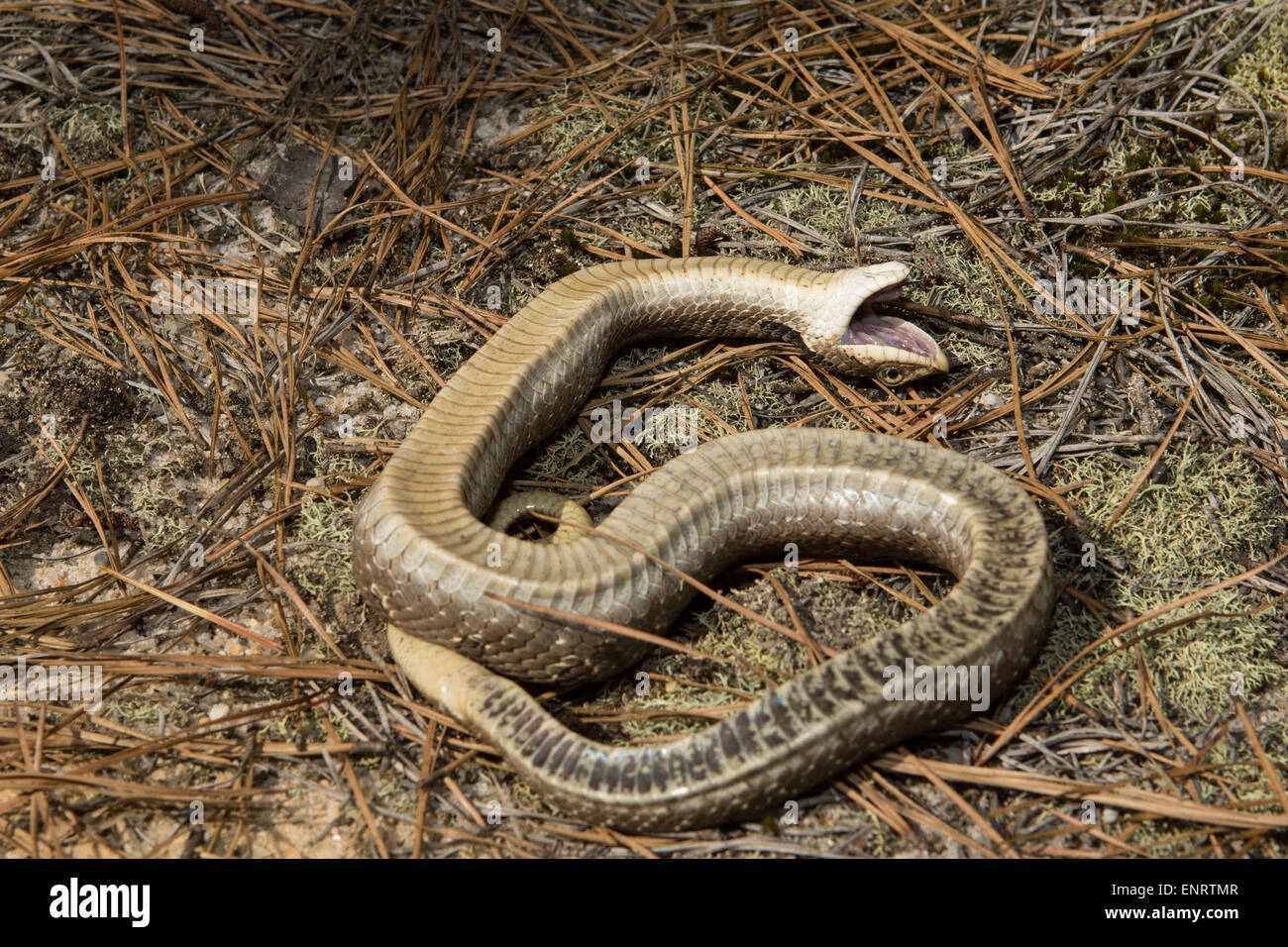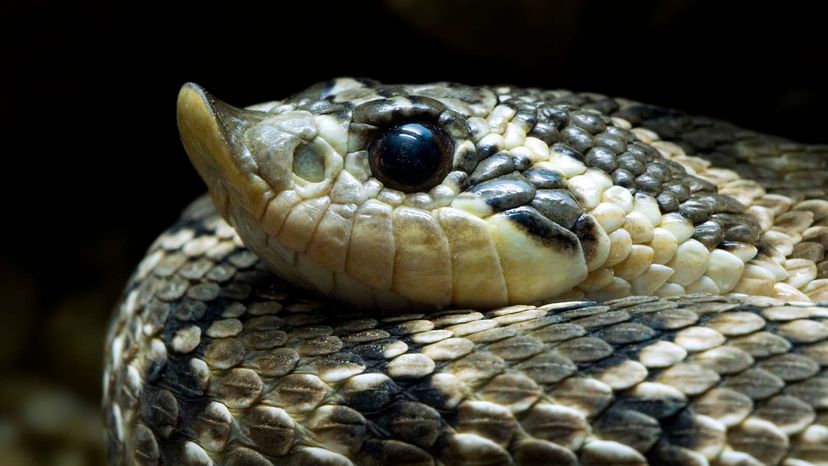Thanatosis is the animalistic art of playing dead. Creatures who use this strategy — such as the hognose snake — tend to be small and slow-moving. After all, against a bigger, faster predator, the typical “fight or flight” response doesnt always work.
Hognose snakes are relatively small, making them easy prey for larger animals (including other snakes) if they dont get creative about their defenses.
Playing dead, also known as thanatosis, is an ingenious survival tactic used by some species of snakes when faced with danger This fascinating behavior involves snakes suddenly going limp, flipping onto their backs, opening their mouths, and sticking out their tongues to give the appearance that they are dead Let’s explore why snakes play possum and which species are prone to faking their own demise.
Why Do Snakes Play Dead?
Snakes play dead for two primary reasons – to avoid predators and to catch prey off-guard.
For non-venomous species playing dead is an effective last ditch effort to discourage attack from predators when flight is impossible. By feigning death, snakes hope to convince predators they are sick or diseased making them less appetizing as a meal. Some snakes even excrete a foul smelling musk from their cloaca to further the deception.
Interestingly, a few types of snakes, like the Eastern Hognose, will also use their cobra-like neck flaring and other dramatic antics to sell the bluff before succumbing to their mock death. Once the danger passes, the “deceased” snake will eventually roll back over and slither away unscathed.
In contrast, snakes like the Asian Tentacled Snake will actually use their lifeless impersonation as a stealthy means to draw in prey. By remaining incredibly still for long periods, they are able to ambush unsuspecting fish that swim by their head tentacles.
12 Snakes That Play Possum
While many serpents around the world exhibit some form of death feigning behavior, these 12 species are particularly prone to flipping their lids and playing opossum:
1. Eastern Hognose Snake
The Eastern Hognose is arguably the most famous death faker in the snake world. It will hiss, flatten its neck, and strike at predators before rolling on its back, going limp, and emitting foul smells from its cloaca. An Oscar-worthy performance!
2. Common Kingsnake
The Kingsnake will flatten its head, vibrate its tail, and poop on attackers before balling up and playing dead. It hisses aggressively beforehand to sell the act.
3. Grass Snake
Found near European wetlands, Grass Snakes play dead by going belly up, rolling their eyes back, and hanging their tongues out limply. They may also release a foul musk.
4. Rinkhals
Similar to a cobra, this spitting snake will hood up and stand its ground before playing dead as a last resort, going completely still with mouth agape.
5. Asian Tentacled Snake
This aquatic ambush expert will remain incredibly motionless for up to 30 minutes underwater while hunting fish.
6. Garter Snake
Common across North America, Garter Snakes play dead by going completely limp and excreting a terrible smelling musk from their anal glands.
7. Hog-Nosed Snake
Close relatives of the Eastern Hognose, these dramatic possum actors flatten their necks, strike, and excessively roll around before playing dead with tongues hanging out.
8. Texas Indigo Snake
Growing up to 8 feet long, this giant serpent plays dead by going completely still but will keep wiggling its tongue for added effect.
9. Dice Snake
Found in Africa and Asia, Dice Snakes emit a foul musk before playing dead when threatened. They go belly up and hang their mouths open.
10. Water Snakes
Multiple water snake species in the Hydrodynastes genus will play dead with mouths agape when approached by predators.
11. Ring-Necked Spitting Cobra
Also known as the Rinkhals, this spitting serpent plays dead after first attempting to ward off predators by flaring its neck and appearing poised to strike.
12. Common Kingsnake
Widespread across North America, the Common Kingsnake exhibits death feigning behaviors like rolling into a ball when threatened. It may strike or vibrate its tail beforehand.
As you can see, playing dead is a surprisingly common and effective survival strategy used by snakes worldwide when facing attack. However, it’s worth noting most culprits are harmless, non-venomous species.
How Convincing is Snake Possum Acting?
Given snakes don’t actually have arms or legs to go limp, just how convincing is their dramatic death impersonation? Believe it or not, many snake species have evolved a variety of clever physical and chemical adaptations to sell the illusion:
-
Motionlessness – snakes remain incredibly still and relaxed, sometimes for over an hour.
-
Mouth agape – tongues are stuck out limply and mouths are left wide open.
-
Belly up – rolling inverted makes them appear vulnerable.
-
Musk secretion – foul anal gland secretions replicate the smell of death.
-
Wild thrashing – some snakes violently twist and roll before playing dead.
-
Neck flaring – designed to startle predators before fake dying.
-
Tongue wiggling – occasional tongue wags maintain the charade.
So whether it’s playing dead underwater for minutes on end to catch prey or emitting noxious fumes while upside down and tongue hanging out, snakes have turned pretending to kick the bucket into an artform!
Spotting Dead Snakes – Alive or Convincing Act?
Telling an actually deceased snake apart from one that is cunningly playing dead can be incredibly tricky:
Inspect the belly – is it flipped over and exposed in submission? Dead snakes are often found belly up.
Check for tongue/head movement – live snakes maintain some motion and intermittent wiggles.
Consider body bloating – inflated appearance makes them seem spoiled.
Smell for musk – foul anal gland secretions replicate decomposition.
Observe eyes – glazed over or rolled back is more convincing.
Monitor closely – sudden signs of life indicate playing dead.
Don’t touch! – best to back away slowly and not agitate it.
While playing dead is relatively harmless, being unable to distinguish between a true corpse and a fake one can be highly dangerous if venomous species are suspected. So observe patiently from a safe distance rather than risking a hand!
Death Faking Snakes – Key Takeaways
-
Playing dead is a common ploy used for both defense and hunting.
-
Motionlessness, exposed belly, limp tongue are key indicators.
-
Species like Hognose and Kingsnakes are drama queen level actors.
-
Convincing musk odors, wild thrashing, eyes rolled back add legitimacy.
-
Difficult to differentiate genuine death from clever ruse.
-
Best to leave the area without contact if any doubt.

Puff Adders (Sort Of)
Hognose snakes lead perilous lives. Hawks, opossums, raccoons and foxes have all been known to make a meal of these reptiles. So will a few other snakes, including the cottonmouth.
When faced with danger, frightened Heterodon snakes put on a little show. Eastern hognoses try to intimidate foes by flattening their necks and rearing up with a threatening hiss much like a cobra. Hence, some people call the reptiles spreading adder or puff adder (which is confusing, because the African Bitis arietans is an actual adder snake called the puff adder).
Unlike real adders, Heterodon snakes dont rely on their venom as a means of self-defense. Remember, hognose snake fangs are situated towards the back of the mouth. Because of this dental arrangement, the snakes have to more or less chew on the target before any venom can be administered.
Since thats not an efficient way to drive off bigger animals, wild hognoses seldom bite their attackers.
Hognose Physiology
Hognose snakes have facial scales that give them an upturned nose. These are used to push aside dirt, sandy soil and leaf litter as the critters search for food.
North American species belong to the snake genus Heterodon. Other so-named “hognose snakes” dwell in Madagascar and South America. But even though all three groups have upturned noses, theyre classified under separate genera by reptile experts.
Heterodon or hognose snakes occur from the United States Eastern Seaboard to Arizona and the Rocky Mountains. In the great outdoors, you can find them as far north as central Canada — and as far south as San Luis Potosí, Mexico. They can be easily identified by their slender dark brown body and upturned snout.
The genus includes three distinct species.
- The largest is the eastern hognose snake (Heterodon platirhinos), which can grow to 46 inches, or 117 centimeters, long.
- About half that size is the southern hognose snake (Heterodon simus).
- Rounding out the trio is the charming western or plains hognose snake (Heterodon nasicus).
Gee, arent those names creative?
Eastern Hognose Plays Dead
FAQ
What kinds of snakes play dead?
The Hognose Snake Plays Dead in Dramatic Fashion. Thanatosis is the animalistic art of playing dead. Creatures who use this strategy — such as the hognose snake — tend to be small and slow-moving. After all, against a bigger, faster predator, the typical “fight or flight” response doesn’t always work.
Why is my snake playing dead?
Snakes escape predators by playing dead — and they make their performances even more convincing by smearing themselves with their own blood and feces, …May 9, 2024
How long do snakes play dead for?
Just under half of the snakes smeared themselves in musk and feces, while around 10 percent bled from the mouth. Some fake deaths without musk, poop or blood lasted almost 40 seconds. The 11 snakes that combined all three defenses spent, on average, around two seconds less feigning death.

